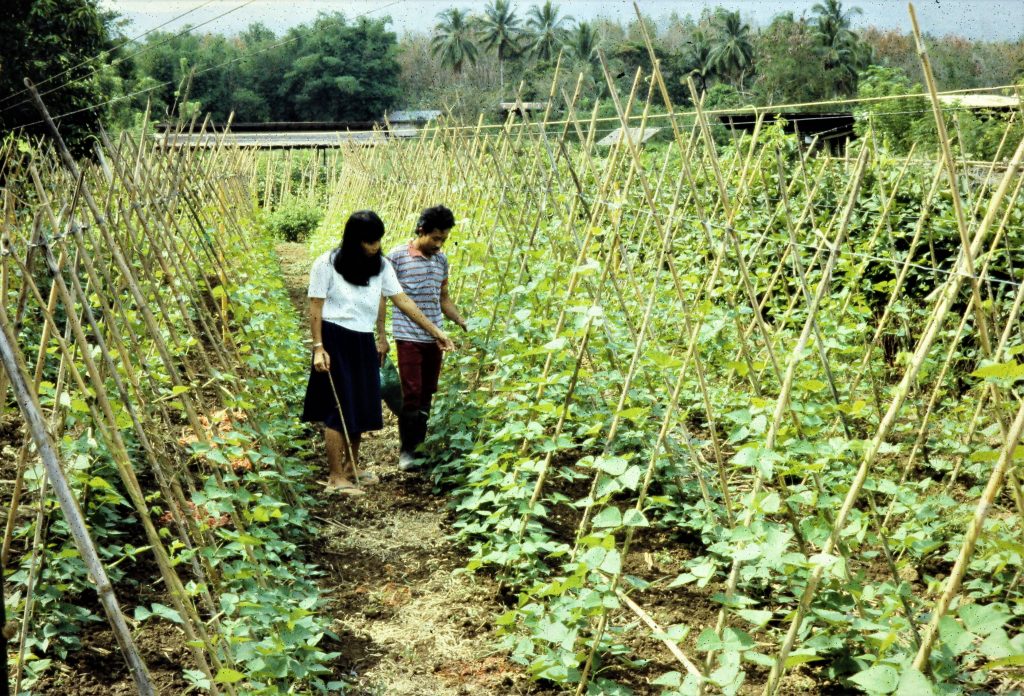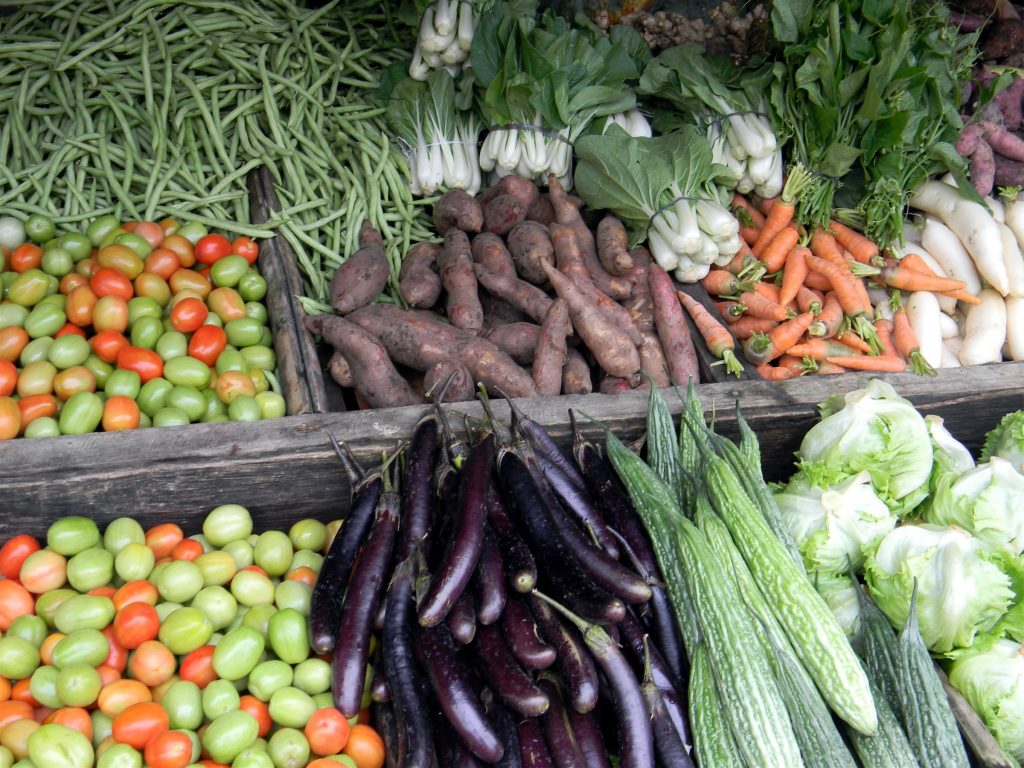
“Farming in the city is not a straightforward business. Urban agriculture requires much finer technological and organizational precision than rural agriculture because it must be more intensive, more tolerant of environmental stress, more responsive to market behavior, and more carefully monitored to protect public health.” – Luc J.A. Mougeot, senior program specialist of the International Development Research Center in Ottawa, Canada
FARMING is almost always associated with rural areas, rivers, hills and mountains. Unknowingly, farming can also be done right in the city. Experts call this practice asurban agriculture.
“Many decades back, urban agriculture was largely treated as a hobby rather than a measure to help address food insecurity,” observed Dr. William Dar, one of the country’s experts when it comes to agriculture. “But with dwindling land and water resources and climate change badly affecting smallholder farmers and fisherfolk, urban and peri-urban agriculture (UPA) is becoming a viable option to help secure the food needs of urban communities.”
Contrary to what most people think, urban agriculture is not only growing vegetables. “Urban agriculture refers not merely to the growing of food crops and fruit trees but that it also encompasses the raising of animals, poultry, fish, bees, rabbits, guinea pigs, or other livestock considered edible locally,” explains Dr. Irene Tinker, an American professor in the department of city and regional planning at the University of California.
In recent years, urban agriculture has been creating a big impact in some thickly-populated areas.

The Washington, D.C.-based Worldwatch Institute reported that the Beijing government in the 1990s decided that urban agriculture was an important way to meet the city’s food needs. Today, farming in, around, and near Beijing not only provides residents with safer, healthier food, it also keeps farmers in business.
“Between 1995 and 2003, the income for farmers living just outside of Beijing doubled,” wrote Brian Halweil and Danielle Nierenberg in their collaborative report published in one of the issues of the institute’s State of the World.
In Vancouver, Canada, 44% of the people grow vegetables, fruits, berries, nuts, or herbs in their yards, on their balconies, or in one of the 17 community gardens located on city property. “There, farming the city is part of a much larger movement that includes restaurants buying from local farms, and buying clubs in which neighbors subscribe to weekly deliveries of produce,” noted Halweil and Nierenberg.
In Russia, 72% of all urban families are engaged in raising food, mostly part-time, according to the two authors. In the United States, the number of farmers’ markets selling locally-grown produce increased by 40% from 1994 to 1996. Urban farming supplies Israel with 95% of its food needs. In Thailand, 60% of the land is under cultivation in greater Bangkok.
While urban agriculture is booming in some parts of the world, it has just started in the Philippines. “Urban agriculture is slowly gaining ground but still has a miniscule contribution to overall crop production,” Dar wrote in his Manila Times column. “The most popular concept today that can support urban agriculture is ‘edible landscaping’ that is being pushed by the University of the Philippines Los Baños.”
The Department of Agriculture is also promoting vegetable gardening in public elementary and secondary schools nationwide through the Gulayan sa Paaralan Program (GPP). In Davao Region, a total of 1,675 schools established GPP after a decade of the implementation of the program, according to Adam Morrell in an EDGE Davao news report.
GGP is an initiative of DA’s High Value Crops Development Program in tandem with the Department of Education. Its main objective is to support school feeding programs. “It also addresses (the) malnutrition (problem by helping) school children to get better nutrition as well as the neighboring communities,” Merriel N. Aglibot, GPP focal person in Davao region, was quoted as saying by Morrell.

The New York-based United Nations Development Program estimates that 800 million people are involved in urban farming around the world, with the majority of them found in Asian cities. Of these, 200 million produce food primarily for the market, but the great majority raise food for their own families.
In a survey conducted for the United Nations, cities worldwide already produce about one third of the food consumed by their residents on average. This percentage is “likely to grow in coming decades, given that the need for urban agriculture could be greater now than ever before,” Halweil and Nierenberg wrote.
Urban agriculture is nothing new, if we scanned the yellowed pages of history. The hanging gardens in Babylon, for instance, were an example of urban agriculture, while residents of the first cities of ancient Iran, Syria, and Iraq produced vegetables in home gardens.
Four thousand years ago in the pre-Olmec Valley of Mexico, small towns on stone-faced terraces, farmed vegetables and raised dogs and turkeys. The Aztec state was partly dependent on food production within and fringing the metropolis of Teotihuacán and the capital city of Tenochtitlan.
“In ancient times, the cost of transport was much greater,” explains Jac Smit, head of the New York-based Urban Agriculture Network, “so the impetus for growing food in cities was greater.”
The dearth of available food products during World War II in Europe saw a resurgence of small-scale food production in European cities which had given themselves over to industrialization. And the recent worldwide swell in urban agriculture is theorized to be related to “the increase in the urban poor population which is predicted to grow along with the general growth in urban density.”
“Over 60 million people are now added to the planet’s burgeoning cities and suburbs each year, mostly in low-income urban settlements in developing countries,” the Worldwatch report pointed out.
The number of hungry people living in cities is growing at alarming rate, according to a report released by the UN Food and Agriculture (FAO). It said: “While malnutrition in rural areas still a bigger problem in terms of actual numbers of people urban residents, particularly children, also suffer from food shortages as well as micronutrient deficiencies.”
“Urban agriculture can be one of the most important factors in improving childhood nutrition, by increasing both access to food and nutrition,” Halweil and Nierenberg noted in their report.
Another advantage: farms in the city can often supply markets on a more regular basis than distant rural farms can, particularly when refrigeration is scarce or during a rainy season when roads are bad.
“Beyond providing jobs and good nutrition, urban farming can have a whole range of other health benefits,” Halweil and Nierenberg wrote. Research has connected gardening to reducing risks of obesity, heart disease, diabetes, and occupational injuries. For urban residents especially, working with plants and being in the outdoors can both prevent illness and help with healing.
Wayne Roberts of the Toronto Food Policy Council sees urban agriculture as the “new frontier in public health,” benefiting health twice: first, by supplying urbanites with more foods and, second, by affording them the exercise involved in raising food.
For cities confronted with growing waste disposal, the strongest environmental argument for local farming is the opportunity to reuse urban organic waste that would otherwise end up in distant, swollen landfills.

Despite all that farming can do for the city landscape and the urban soul, politicians, businesses, and planners continue to regard food as a “rural issue” that does not demand the same attention as housing, crime, or transportation.
In many cities around the world, farming is even outlawed. “Policymakers would be wise to realize the nutritional, social, ecological, and economic benefits of reversing this stubborn mindset and putting programs in place to encourage cities to feed themselves,” Halweil and Nierenberg suggested.
Urban agriculture should be taken seriously, Dr. Dar suggested. “We must start exploring the vast potential of urban agriculture and indoor food production in the cities, and not wait for the time when food production in the rural areas gets badly affected by rapid urbanization and extreme weather events.”






